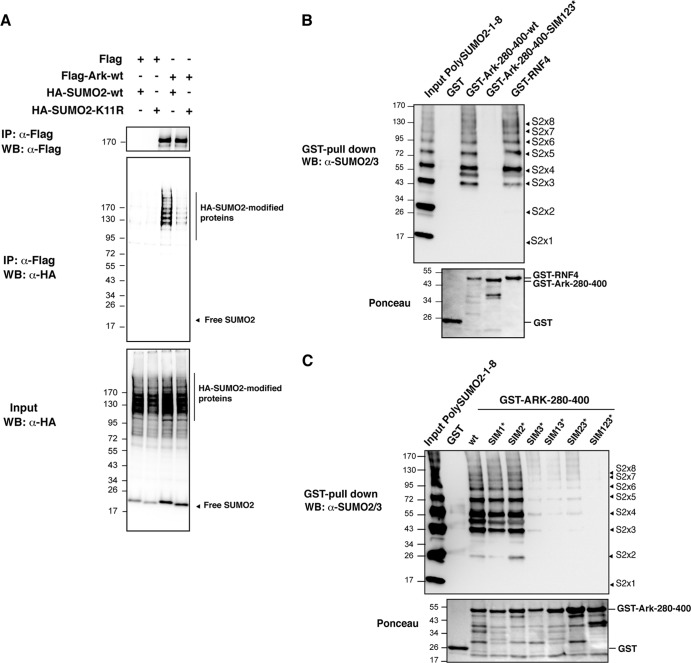Fig 3.
Arkadia interacts specifically with polysumoylated proteins and poly-SUMO2 chains through its SIMs. (A) Arkadia interacts with poly-SUMO2 chains in vitro. HEK293 cells were transfected with empty vector or Flag-Ark-wt, along with HA-SUMO2-wt or the HA-SUMO2-K11R mutant, which cannot form poly-SUMO2 chains. Flag immunoprecipates from nuclear extracts were analyzed by Western blotting using anti-Flag and anti-HA antibodies. The corresponding lysates before immunoprecipitation were analyzed using anti-HA antibody. (B) Arkadia interacts with poly-SUMO2 chains in vitro. Recombinant poly-SUMO2 chains (1 to 8 SUMO2 molecules, as shown by the arrowheads) were subjected to GST pulldown experiments with immobilized GST, GST-Ark-280-400-wt, GST-Ark-280-400-SIM123*, or GST-RNF4. Poly-SUMO2 proteins in the input (25%) and after pulldown were detected with anti-SUMO2/3 antibody by Western blotting. The blot was stained with Ponceau S prior to immunostaining in order to control the amount of GST proteins in the experiment. (C) SIM3 is the most critical SIM for poly-SUMO interaction. The experiment was performed as described for panel B with the indicated GST-Ark-280-400 SIM mutants. Numbers to the left of the gels are molecular masses (in kDa).

